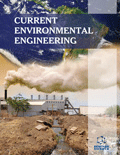Abstract
Background: Personal care and pharmaceuticals products affect the ambient water quality when these materials enter the environment in the form of human and animal excreted metabolites or as effluents from hospitals, pharmacies, and chemical manufacturing facilities. The stated compounds are difficult to capture and pose a serious threat to the aquatic ecosystem, and human health. Photocatalytic Degradation (PCD) is seen to be an attractive and inexpensive method, when compared to the ones such as ozonation, photo-Fenton oxidation, sonolysis, and photolysis for the elimination of pharmaceutical compounds from the wastewater.
Methods: Owing to the underlying complex nonlinear physicochemical phenomena, the design and construction of a “first principles” model for predicting the rate constant of the PCD is a timeconsuming and tedious process. To overcome the said difficulty, in this study, the stated mathematical models have been developed-for the first time-using an artificial intelligence (AI) based novel datadriven modeling method, namely, genetic programming (GP). The GP-based model predicting the rate constant of the PCD of pharmaceuticals uses following inputs: time of exposure of pharmaceutical pollutant to the solar radiation, pH of wastewater, concentration degraded during the measured time, and the ratio of concentration degraded to the initial concentration of the sample. In this study, PCD of three pharmaceutical pollutants, namely, Ciprofloxacin, Naproxen, and Paracetamol was studied and modeled using a single GP-based model. In the model’s input space, the three pharmaceutical pollutants were differentiated using a number of attributes related to their molecular structures.
Result: The GP-based model predicting the rate constant of the PCD, proposed in this study, exhibits an excellent prediction accuracy [correlation coefficient (CC) > 0.9] and generalization performance.
Conclusion The GP-based modeling strategy introduced here can be fruitfully used in the development of models for a variety of other pharmaceutical degradation reactions.
Keywords: Artificial intelligence, genetic programming, N-doped TiO2 photocatalyst, pharmaceutical micropollutants, photo-catalysis, pharmaceutical compounds.
Graphical Abstract
 29
29 5
5

